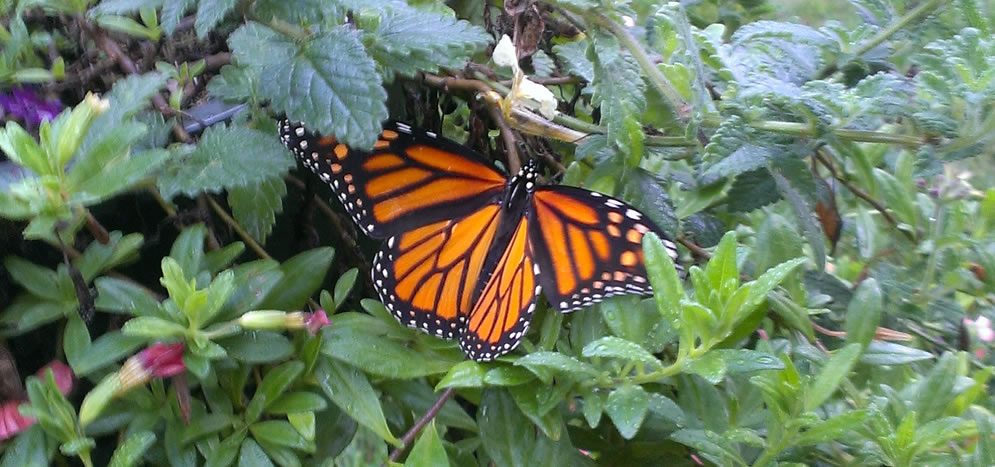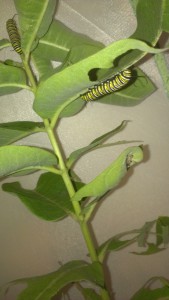When I am tagging Monarch butterflies, I feel like the klutzy nature lover Elaine May in the cult classic A New Leaf. In the movie, she is a rich professor pursuing botanical discoveries while her gold digger husband Walter Matthau tries to dispose of her on a crazy camping trip. He ends up falling for his brilliant yet bumbling new wife, of course.
Just as I have fallen for Monarchs. In August and September in Minnesota, the Monarchs shed their green chrysalis and hit the fields of goldenrod, chowing down for the long trek to Mexico to winter. That is when my partner and I, net and tags in hand, try to capture them—for the good of science. We are volunteers for Monarch Watch, which tags and
monitors Monarch butterflies in hopes of learning more about how they navigate, migrate, and survive. The more we learn about Monarchs, the more we are able to help keep the species alive.
But as I said, I am not a natural in nature. In three years of doing this, I have discovered a few things:
1. Monarchs do not stick to the hiking trails. They drag me into places full of nature “things” such as tall grasses, thorny bushes, hidden holes that eat ankles, and other insects. I do not like any of these things to be touching my legs or ankles (the creepy crawly factor).
2. Monarchs are fast. And I am not.
3. Monarchs love hot afternoons in hot, buggy fields. And I do not.
4. Monarchs enjoy teasing humans, fluttering by when you are sans net—when you are driving the car, biking, or sipping margaritas on the patio.
Still, I love placing a tiny tag on a beautiful orange-and-black wing, feeling the butterfly’s sticky legs hanging on to me for a moment in some quiet interspecies communication before I place it on a flower and wish it safe travels to Mexico.
So this year, in addition to tagging the wild ones, we are rearing our own Monarchs. We bought a habitat at the local bird seed store, found four caterpillars in the wild, kept them supplied with fresh milkweed (their only food source), and watched them spin their chrysalises. Any day now they will come out, dry their wings, and be ready to travel. That’s when I will tag them (without wading into the creepy tall grasses).
If this is cheating, I don’t care. After all, those little caterpillars could have been eaten by birds
and never reached this point, without my assistance.
Please do what you can to help the Monarchs:
- Restore milkweed; it is the only plant where Monarchs lay their eggs and the only food they eat in their early stages. Milkweed is always under attack by development, the spraying of herbicides, and roadside mowing.
- Contribute to and become involved in programs researching the Monarchs and trying to boost their numbers: Monarch Watch; Monarch Joint Venture, a leader in monarch conservation; Save Our Monarchs, which seeks to plant more milkweed; and the University of Minnesota’s Monarch Larva Monitoring Project, whose volunteers monitor milkweed for larva at more than 900 sites across the United States, Canada, and Mexico.









